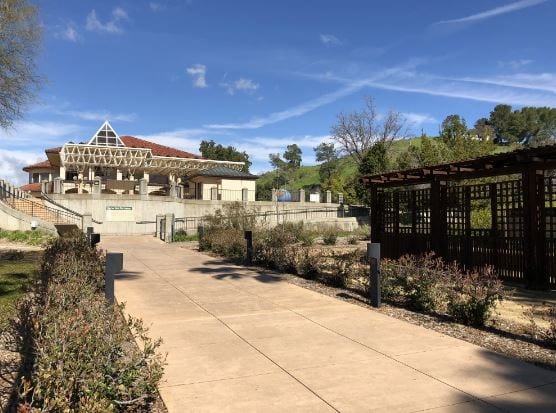As California experiences exceptionally dry conditions for a third consecutive year, Santa Clarita Valley Water said the SCV is prepared for a potential drought.
“(SCV Water) and this community on the whole has done a really exceptional job of preparing itself for droughts,” said SCV Water’s Director of Water Resources Dirk Marks. “We have several groundwater banking programs, which we are accessing this year.”
SCV data show that SCV residents have done their part to conserve water.
“The conservation mandate from the state required us to reduce our gallons per capita day by 20% by 2020 and our customers achieved a 25% (reduction),” said Matt Dickens, sustainability manager at SCV Water. “So those types of successes coupled with planning and banking and storage and flexible storage really set us up in a good position, at least at this point in time.”
This week, Gov. Gavin Newsom declared a regional drought emergency in two northern California counties.
He also directed state agencies to “bolster drought resilience and prepare for impacts on communities, businesses and ecosystems if dry conditions extend to a third year,” according to a press release from the governor’s office Wednesday.
Several local factors indicate that a drought emergency may become a reality in the SCV if current conditions persist.
Marks said local precipitation levels are tracking at historic lows and that the entire state has witnessed low precipitation this year, which has resulted in a smaller snowpack and a smaller water allocation from the State Water Project.
SCV Water is further challenged by reduced local water supplies due to PFAS – human-made chemicals found in a wide range of products used by consumers. The water agency operates a facility – opened last year – to treat the contaminated local water supply.
“The soil moisture content in the mountains is pretty dry so it’s not contributing to the runoff into the streams that support the reservoirs that provide us our water supply,” Marks added.
Despite these water challenges, Marks and Dickens are optimistic.
Marks said water demand in the SCV has “declined significantly” over the past decade through implementing conservation measures.
It’s a lesson from the multi-year drought less than a decade ago that’s still applicable today, Dickens said.
“There’s ample opportunity to improve water use efficiency and achieve conservation through very cost-effective, easy things to do, without impacting the utility of the water service,” said Dickens.
Dickens recommended finding and fixing leaks, reducing irrigation runoff and watering to the weather.
For more information about conservation, visit yourscvwater.com/save-water-money/residential/ and yourscvwater.com/conservation-tips/.
Like this:
Like Loading...
Related





 Tweet This
Tweet This Facebook
Facebook Digg This
Digg This Bookmark
Bookmark Stumble
Stumble RSS
RSS


























REAL NAMES ONLY: All posters must use their real individual or business name. This applies equally to Twitter account holders who use a nickname.
3 Comments
Where will the water go when we lower the water level at Castaic lake to do repairs? Will we just use it every day without refilling it to drop the level? May 1st is the start date.
https://californianewstimes.com/stacy-fortner-drought-shouldnt-be-ignored/262498/
Reserves are certainly good, but I wonder if underestimating the state-wide drought is really the way to go. For example, the newly proposed drought ordinance begins with a list of some water conservation strategies that we all must now follow. I suspect that many people are unaware of these simple steps to reduce water usage and save on water bills. Isn’t it a good time to do this by talking about unusually low rainfall?
The water scarcity ordinance we propose has six stages, unlike most other ordinances, which have only five at the request of the state. Our first step only states that we need to comply with all these water conservation strategies, and that the authorities should already do so. Again, these are simple changes for most people, and many of us are already living behaviors.
As climate change continues to warm our planet, snow cover in the Sierra Nevada Mountains is expected to diminish and eventually disappear. Rainfall may continue to decline in our area. Are you ready for this? There is no need to cut this year, but what do we have to do to build tens of thousands of new homes and supply twice the population’s water during the drought?
You can see for yourself by checking the drought plan of the SCV Waterworks Bureau. You can view draft regulations at yourscvwater.com/wscp/.
Great to have reserves, but the Agency’s drought contingency plan calls for many easy water saving practices to be used by residents all the time. This is not happening as one can easily observe by the amount of water running down the gutters in most SCV neighborhoods on a daily basis. Telling people they have plenty of water when we have had the lowest rainfall in over a hundred years is not going to persuade people to change their habits or fix their sprinklers. Is this really the best message?